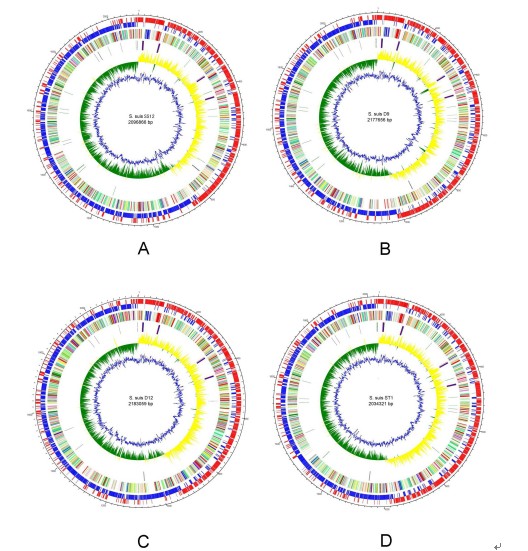Streptococcus suis (S. suis) is a major swine pathogen and an emerging zoonotic agent posing a threat to human health, especially to people who have close contact with swine or pork by-products. Since the first reported case of human meningitis caused by S. suis in Denmark in 1968, cases of infection have been reported continuously in more than 20 countries, with more than 700 people being affected. In China, there are two recent large-scale outbreaks of human S. suis infections, one associated with 25 cases and 14 deaths in Jiangsu in 1998 and the other with 204 cases and 38 deaths in Sichuan in 2005. S. suis have 33 serotypes, but only some of them are responsible for infections. Especially, S. suis serotype 2 is considered the most pathogenic and the most prevalent capsular type. “Our findings could be contributed to a better understanding of the genomics of S. suis and to discovering genetic markers for clinical purposes.” said Prof. XIAO Jingfa, of Key Laboratory of Genome Sciences and Information, Beijing Institute of Genomics (BIG), Chinese Academy of Sciences (CAS). Using a rapid, high-throughput approach, a cooperative research team from BIG, and Huazhong Agricultural University reported the genome of serotypes 1, 7, 9 and 1/2. Additionally, they performed a full comparative genomic analysis based on 13 serotype strains, including other 9 previously completed genomes. It reveals that serotypes 1, 3, 7 and 9 are phylogenetically distinct from serotype 2 strains, but serotype 1/2 and 14 are closely related to serotype 2 strains. The results of this study also indicate that non-pathogenic serotypes could supply a recombinant site for a pathogenic island (89 Kbp) mediated by conjugal transfer and thus become virulent. The paper was published in BMC Genomics on Oct 25, 2011 paper link: http://www.biomedcentral.com/1471-2164/12/523 Schematic circular diagrams of the S. suis SS12(A), D9(B), D12(C) and ST1(D) genomes. (Image by Prof. XIAO’s Group) Contact: Prof. XIAO Jingfa Email: Xiaojingfa@big.ac.cn
